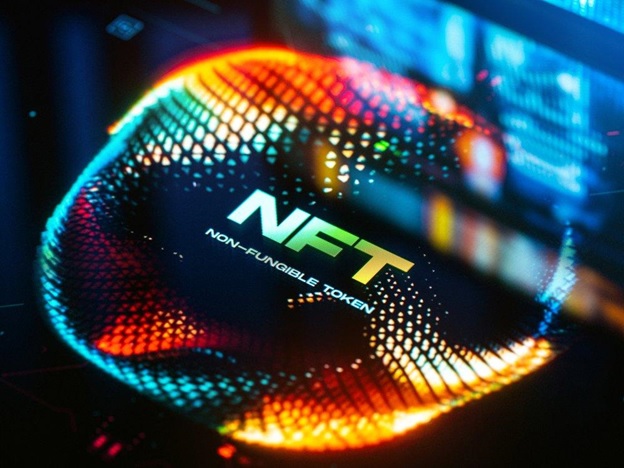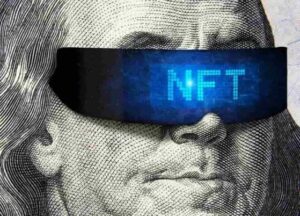THE GROWING CYBERCRIME RISKS OF NFT EXPLOSION

In the world of cryptocurrencies, one of the most popular and lucrative investment opportunities today is to invest in “non-fungible tokens”. Non-fungible tokens (NFTs) are digital assets with unique characteristics from traditional cryptocurrencies. They are digital representations of unique, real-world items such as securities, collectables, or other finite digital assets. They are called so, because they are not fungible, as they are unique and cannot be substituted, unlike fungible tokens, which an individual can substitute for a similar asset. Such tokens may seem like a niche concept, but the mainstream financial and investment world now recognises their value. NFTs have tremendous potential for crime because of their unique characteristics. Although many new doors for investments have opened up with the advent of NFTs, several investors who view NFTs as an excellent deal to get rich are finding them fraudulent in many instances.

The spread of crypto assets such as NFTs poses new challenges for law enforcement agencies in the digital world. While cryptocurrencies have many legitimate use cases, such as digital currency exchanges, decentralised digital wallets, and non-fungible tokens. On the flip side, criminals use them for illicit activities such as money laundering, cybercrime, and terrorism financing.
In a world where cybercriminals and terrorists are looking for new ways to finance their illegal activities and evade law enforcement, crypto-tokens and NFTs could significantly impact the future of law enforcement.

NFT is a form of digital art that can be bought and sold under a veil of anonymity given by blockchain technology. If criminals combine NFT with new technology, they can conceal money laundering. People buy and sell NFTs using cryptocurrencies, adding another layer of complexity to tracing these transactions. An artist may take several weeks to produce a work of art, but criminals can steal such art and generate multiple NFTs in a few minutes. The value or piece of NFT gets determined by the price a buyer is willing to pay. A criminal wishing to convert dirty money can generate an anonymous NFT, list it for sale on the blockchain and buy the same NFT using another anonymous digital wallet which could be the dirty money earned through child pornography or drugs. He thereby converts his illegal earnings as legitimate money earned from the sale of the digital artwork or NFT. Modifying illicit fiat currency profits into cryptocurrencies and then moving cryptocurrencies through a complex series of transactions across multiple wallets renders tracing the illegal funds’ route tedious and hard for law enforcement investigators.“

For instance, the police in the USA are investigating a rug pull, where creators of NFT solicited investments and abruptly abandoned the project and retained the investor’s funds by defrauding them. The creators of the NFT Frosties website attracted investors by promising them purchaser’s holder rewards, and among other things, giveaways, early access to a metaverse game, and an exclusive mint pass to upcoming Frosties seasons. Soon, the creators of the website, who had disguised their identities, abruptly abandoned the Frosties NFT project within hours after selling out Frosties NFTs by deactivating the Frosties website and transferring approximately $1.1 million in cryptocurrency proceeds from the scheme to various cryptocurrency wallets under their control in multiple transactions spawned to confuse the source of funds. Following a detailed investigation, police have now charged two twenty-year-old accused Nguyen and Llacuna for wire fraud which carries a sentence of 20 years.

Blockchain data company Chainalysis, which has been tracking NFT crimes, has reported several instances of ‘wash sale’ and ‘money laundering. So far, in 2022, they have documented numerous cases of phishing, hacking, and scams using NFTs. In a wash sale, the owner of an NFT misleads potential buyers by repeatedly buying his own NFT, from different electronic wallets set up by him at very high prices, by artificially bidding up the cost to create artificial demand, which tricks the unsuspecting buyers into buying the NFT at a mind-boggling price. Chainalysis, the data company, which analysed wash sales, detected net crime proceeds of $ 8.4 million from 262 such incidents of wash sales. As the NFT industry is new, it will take time to detect other new NFT crimes which may be happening.

Further, Chainalysis, while analysing their blockchain data, discovered $2.7 million worth of NFT money laundering transactions compared with $8.6 billion in crypto money laundering. One of the reasons why Chainalysis detected a low percentage of money laundering in the NFT space could be because the money laundering in the NFT space could be outside the world of data, or it’s pretty probably because NFTs are still not widespread and are not being viewed as an attractive option in the crypto space.

NFTs, due to their unique characteristics, could transform the way crimes get committed and investigated. For instance, we don’t have a method to detect the drug cartels masking their income from the sale of drugs as proceeds from the deal of NFT. NFTs need close monitoring because of the risks associated with buying or selling NFTs using cryptocurrency. And transfers of cryptocurrency from illicit wallets related to malware, ransomware, darknets, scams, terrorist financing etc. Authorities must insist that KYC technology in NFT marketplaces collect KYC information on users who send or receive payments in NFT transactions to prevent fraud and scams.

There has been little NFT regulation to date in India. There is no specific act in India to govern NFTs, and as such, it is currently only governed by the general principles of contract and the Copyright Act. As criminals have begun using NFTs, law enforcement machinery in India needs awareness, education, rules and laws to stop criminals from exploiting the latest emerging technology of NFT.
 Dr.K. Jayanth Murali is an IPS Officer belonging to 1991 batch. He is borne on Tamil Nadu cadre. He lives with his family in Chennai, India. He is currently serving the Government of Tamil Nadu as Additional Director General of Police, Idol Wing CID.
Dr.K. Jayanth Murali is an IPS Officer belonging to 1991 batch. He is borne on Tamil Nadu cadre. He lives with his family in Chennai, India. He is currently serving the Government of Tamil Nadu as Additional Director General of Police, Idol Wing CID.

May 11, 2022 at 5:50 PM /
my friends and I have been searching about lately. This kind of detailed information here on the site is beneficial and appreciated and is going to help my wife and I in our studies while I am at work. It looks like everyone has a significant amount of expertise about the stuff I am interested in and this page and other categories and information like wise show it. Typically i’m not on the internet all of the time however when I get a break i’m usually perusing for this sort of knowledge and things closely concerning it.